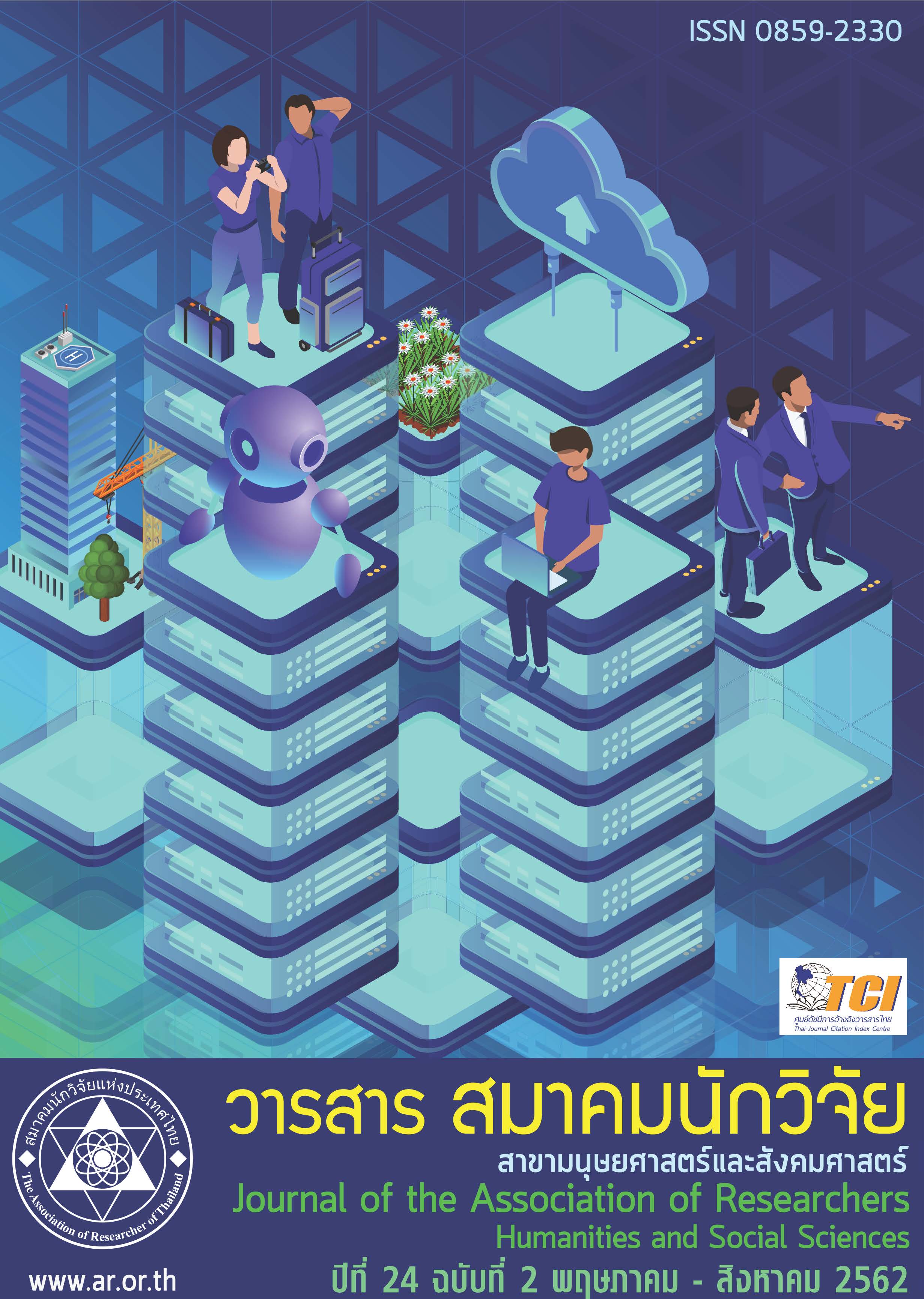Factors Affecting Individual Spirit at Work of Healthcare Professionals In Crowns Prince Hospitals Thailand.
Main Article Content
Abstract
This research aims to study: 1. individual spirit at work of healthcare personnel the Crowns Prince hospitals, Thailand; and 2. factors affecting individual spirit at work of healthcare personnel the Crowns Prince hospitals, Thailand. The sample of this research consisted of 300 personnel including doctors, dentists, pharmacists and nurses who worked at 21 Crowns Prince hospitals in Thailand, selected by multi-stage sampling. A questionnaire that has Cronbach’s alpha value of 0.96 was used to collect the data. Data were analyzed with descriptive statistics and a structured equation model. The research findings indicated that the four factors of spirit at work including Inner life, meaning and purpose in work, sense and connection of community and spiritual connection had in influence on individual spirit at work of healthcare personnel in the Crowns Prince Hospitals, at a high to very high level. Furthermore, the analysis of the structural equation model (SEM) showed that spiritual leadership, organizational culture and appropriate job design significantly affected the individual spirit at work of the respondents. These research findings led to a recommendation that in promoting spirit at work of individual, it is necessary for an organization to give more importance on these spirits at work factors.
Article Details
บทความที่ปรากฏในวารสารนี้ เป็นความรับผิดชอบของผู้เขียน ซึ่งสมาคมนักวิจัยไม่จำเป็นต้องเห็นด้วยเสมอไป การนำเสนอผลงานวิจัยและบทความในวารสารนี้ไปเผยแพร่สามารถกระทำได้ โดยระบุแหล่งอ้างอิงจาก "วารสารสมาคมนักวิจัย"
References
สถาบันรับรองคุณภาพสถานพยาบาลฯ. (2553). ระหว่างเส้นทางของความงดงาม. กรุงเทพฯ: อมรินทร์พริ้นติ้ง.
Ahiauzu, A. & Asawo, S.P. (2012). Impact of clear and compelling vision on workers’s commitment in Nigerian organizations: An examination of workplace spirituality. Journal of Leadership, Accountability and Ethics ,9(6), 113- 124.
Ashmos, D. & Duchon, D. (2000). Spirituality at work: A conceptualization and measure. Journal of Management Inquiry, 9(2), 134-145.
Banyhamdan, K.M.T., Harrim, H., Adden, M., & Al-Qutup, Y. (2012). Transforming an organization into a spiritual one: A five- pathway integrated framework International. Journal of business and management, 7(11), 74-86.
Bennis, W., & Thomas, R. J. (2002). Crucibles of leadership. Harvard Business Review, 80(9), 39-45.
Block, P. (1993). Stewardship; Choosing Service over Self-interest. San Francisco, CA: Barrett-Koehler publishers.
Capra, F. (1996). The web of life: A new scientific understanding of living systems. New York: Anchor Books.
Giacalone, E. & Dafna, R.A. (2000). The development of new paradigm values, thinkers, and business: Initial frameworks for changing business world view. The American Behavioral Scientist, 43(8), 1217-1230.
Giacalone, R., & Jurkiewicz, C. (2003). Toward a science of workplace spirituality, in Giacalone R. et al. (Eds), the handbook of workplace spirituality and organizational performance. New York, M. E. Sharp.
Hair, J.F., Ringle, C.M. & Sarstedt, M. (2011). PLS-SEM: Indeed a silver bullet. The Journal of Marketing Theory and Practice, 19(2). 139-151.
Hawley, J. (1993). Reawaking the spirit in work: The power of dharma management. San Francisco: Berret-Koehler.
Heine, S.J., Proulx, T., & Vohs, K.D. (2006). The meaning maintenance model: on the coherence of social motivations. Personality and social psychology review, 10(2),88-110.
Hooper, D., Coughlan, J. & Mullen, M. R. (2008). Structural equation modelling: Guidelines for determining model fit. The Electronic Journal of Business Research Methods, 6 ( 1 ), 53 – 60.
Javanmard, H.(2012). The impact of spirituality on work performance. Indian Journal of Science and Technology, 5 (1),1961-1966.
Kinjerski, V., & Skrypnek, B. J. (2006). Measuring the intangible: Development of the Spirit at Work Scale. Best paper proceedings of the sixty-fifth annual meeting of the Academy of Management .1-16.
Locke EA, & Latham, GP. (2004). What should we do about motivation theory? Six recommendations for the twenty-first century. Academy of management review. 29 (3), 388–403.
Marques,J.F. (2006). The spiritual worker: an examination of the ripple effect that enhances quality of life in and outside the work environment. Journal of Management Development, 25(9), 884-895.
Mousa, M. & Alas, R. ( 2016) Organizational Culture and Workplace Spirituality. Arabian J Bus Manga Review,6(3),1-7
Neal, J. (1998). Research on individual spiritual transformation and work, Symposium presented at the academy of Management Conference. San Diego, CA.
Pfeffer, J. (2003). Business spiritual management practices that sustain values. Research Gate, 1713, 1-35.
Raelin, J. (2004). The “Bottom Line” of Leaderful Practice. Ivey Business Journal, 68(3).
Robbins, S., & Coulter, M. (2005). Management. (5th Ed.).N.J: Pearson Prentice-Hall.
Rousseau DM. (2004). Idiosyncratic Deals: When Workers Bargain for Themselves. Journal of Applied Psychology,94(2),547-556.
Translated Thai Reference
Thamchotmetin Thanphatson (2017). A Model of Spirituality Study in Thai Society Phimoldhamma Research Institute journal. 4 (1),15-23. (In Thai).
The Institute of Hospital Accreditation, (2010). Between a Beautiful Path. Bangkok: Amarin Printing. (In Thai).


